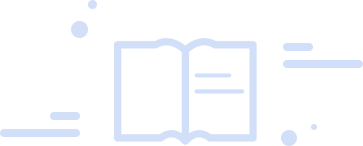1.Listen to part of a conversation between a student and her biology professor.
请听一段学生和其生物学教授之间的对话。
2.Professor:So, the assignment is to reproduce one of the animal camouflage experiments we read about in our textbook. Which experiment did you pick?
教授:所以,我们的作业就是来重复课本上动物伪装的实验之一。你选择哪个实验呢?
3.Student:Well, I was wondering if I can try to reproduce an experiment that’s……kind of the opposite of what was discussed in the textbook?
学生:嗯,我在想我可不可以去重复一个实验……一个和课本上的实验相反的实验呢?
4.Professor:So instead of how and why an animal might hide itself, you want to do something about why an animal might want to be seen? Em? Tell me more.
教授:所以你想去做一个为什么动物会有意暴露自己的实验,而不是一个动物如何及为什么伪装自己的实验?嗯?多说一点。
5.Student:Well, I got the idea from one of the journals you said we should look at. It’s an experiment about ah……they called them eyes bugs in the article?
学生:嗯,我是从你推荐我们阅读的期刊上获得这个想法的。这是一项关于……关于期刊上他们口中所说的眼睛昆虫的实验?
6.Professor:Eyes bugs, sure. The patterns on the wings of moths and butterflies that are generally believed to scare off predators because they look like big eyes?
教授:眼睛昆虫,当然。飞蛾和蝴蝶身上的图案通常会被认为可以吓退捕食者,因为它们看起来像是大大的眼睛?
7.Student:Yeah. Except the article was about the experiment that disputes that theory.
学生:是的。不过这篇文章是关于一项反驳这个理论的实验的。
8.Professor:Well, we know that the markings do scare the birds but the idea that the spots looked like eyes is……well, that is just a commonly held belief.
教授:嗯,我们知道,这些图案确实会吓退鸟类,但是这些图案看起来像眼睛的观点实际上……实际上只是个被人们广泛认同的观点而已。
9.Student:So, that’s not even based on research?
学生:所以,这个观点甚至不是基于研究而来的?
10.Professor:Well, this whole idea of moths and butterfly markings being scary because they looked like eyes, rest on how we imagine the predators, like birds, perceive the markings. And we can never really know that. All we can do is observe bird behavior. But tell me more about the experiment.
教授:嗯,蛾子和蝴蝶身上的图案因为像眼睛而使人害怕这整个观点,其实是基于我们对于捕食者,比如鸟类会如何感知这些图案的想象的。我们永远不能真正地验证这个观点。我们所有可以做的事情是去观察鸟类的行为。但是你现在多给我讲讲这个实验吧。
11.Student:Ok. It said the experiment looked at the shapes of the markings on moths’ wings. The researchers wanted to know if the markings that were round and eye-shaped were more effective in deterring predators than square and rectangular markings.
学生:好的。杂志上说这个实验围绕着蛾子翅膀上图案的形状展开的。研究者想知道,圆形和眼睛形状的图案是不是在吓退捕食者的时候比正方形和矩形的图案更加有效。
13.Student:Yeah. So they attached food to paper models of moths with different shaped marks drawn on the wings to see how birds reacted. And what’s interesting is they realized the round marks were not more effective in scaring bird than other shapes.
学生:是的。所以他们把食物和纸质的蛾子模型放在一起,蛾子模型的翅膀上画着不同形状的图案,然后观察鸟类如何对此作出反应。有趣的是,他们发现,圆形图案并没有在吓退鸟类上比别的形状的图案更加有效。
14.Professor:Were they less effective?
教授:圆形图案效果更差吗?
15.Student:No, they were about the same. But what researchers did determine is that larger markings were more effective than smaller markings in scaring off prey. They call this phenomenon “visual aliveness”.
学生:不,它们效果差不多。但是研究者可以确定的是大的图案比小的图案在吓退鸟类的时候更有效果。他们把这个现象称为“视觉活力”。
16.Professor:Visual aliveness. Um. Well, I guess that it is not all that shocking if you think about it.
教授:视觉活力。嗯。我觉得你仔细想想以后会觉得这个实验也不是那么令人震惊。
17.Student:So anyway, is it ok? Can I repeat this experiment and write about it?
学生:所以无论如何,这个实验可以吗?我可以重复这个实验,然后写一份和它有关的作业吗?
18.Professor:Yes, I think that’ll work. The problem I proceed is……well……where? This is an urban campus, you’ll have a hard time finding a good place to set up the experiment.
教授:是的,我觉得可以。问题是……嗯…..你在哪里做这个实验?我们这里是城里的大学,你想找一个适合做这个实验的地方可能会很困难。
19.Student:Oh, I wasn’t planning on doing it on campus. I’m going home for spring break and my family lives in the country, far from the near city. I can set it up in the backyard.
学生:哦,我没有打算在大学里做。我春假要回家,我家住在乡村地区,离最近的城市很远。我可以在后院里做这个实验。
20.Professor:Good idea. Except one week is not a lot of time, so you will need to make some adjustments to have enough data. I’d set up the experiment near bird feeder and get in as much observation time as you can.
教授:好主意。但是一周的春假时间并不长,所以你需要对实验做一些改动,以得到足够的数据。我建议把实验地点设置在鸟食器附近,然后争取尽可能多的观察鸟类的时间。

 托福-51 C1 Biology Experiment Reproduction 退出
托福-51 C1 Biology Experiment Reproduction 退出